Where the Wood Drake Rests: Wetland Restoration & Conservation on the Eastern Shore
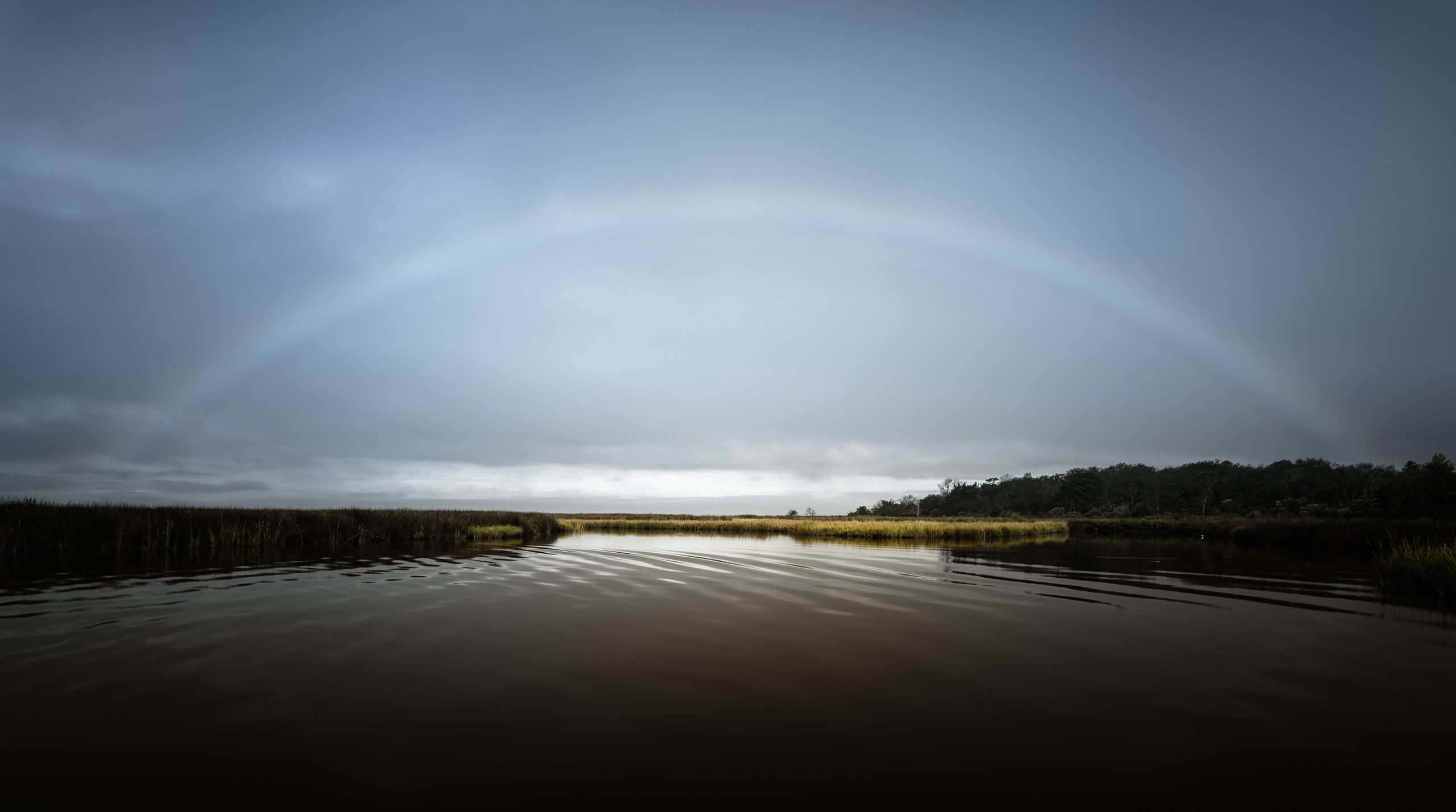
A rainbow over a marsh in Dorchester County, captured by outdoor photographer and writer, Kirk Marks. (@kirkymarks)
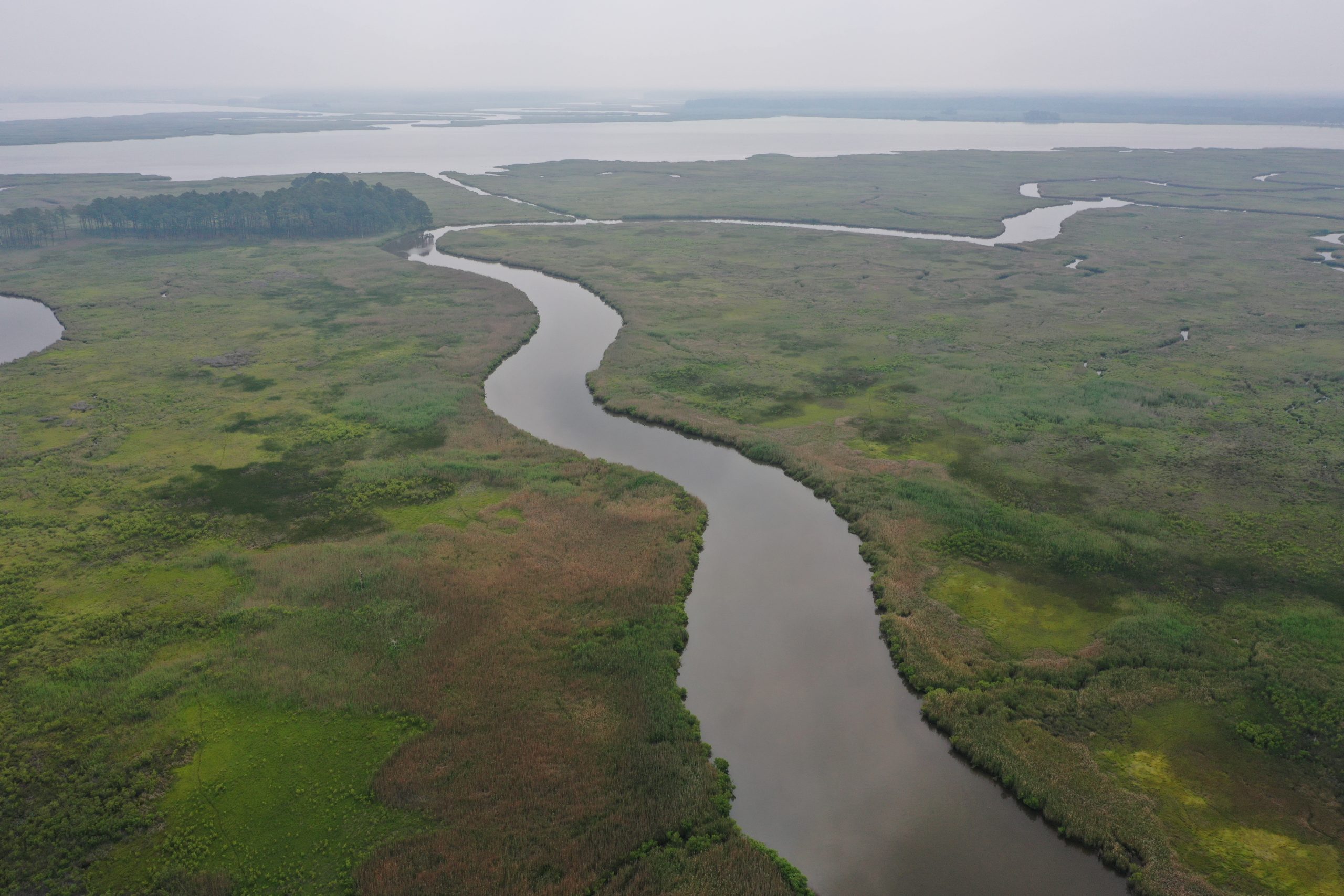
Since 1995, ESLC has protected more than 500 acres of tidal wetland at Horseman’s Perfection in Dorchester County.
“When despair for the world grows in me,” writes the poet Wendell Berry, “… I go and lie down where the wood drake / rests in his beauty on the water, and the great heron feeds.” In the moment of fear, Berry chooses a wetland, a place of still water where he can experience the “peace of wild things.” Fortunately, for now, this stillness, peace, and presence of wild things is still easy to find on Delmarva where wetlands abound from Cecil County to Delaware to the tip of the Eastern Shore of Virginia, all part and parcel of the 64,000-square-mile Chesapeake Bay watershed, the third largest estuary in the world.
A wetland is just as it sounds: an area of land that is wet from water, sometimes seasonally, sometimes all year long. Incredibly diverse, wetlands include swamps, marshes, bogs, mangroves, wet meadows, forested wetlands, carrs, pocosins, fens, estuaries, vernal pools, and seeps, most of which are found throughout the low, watery, river-crossed Eastern Shore. In fact, these wetlands are essential to the Eastern Shore’s identity and are a critical habitat for its most iconic wildlife. Ducks, geese, blue crabs, oysters, herons, bald eagles, rockfish, ospreys, terrapins, and muskrats all thrive in these ecosystems, making them excellent venues for photography, fishing, birding, and hunting. But wetlands are more than just a place for recreation (or an opportunity to moan about swamp smells and mosquitos).
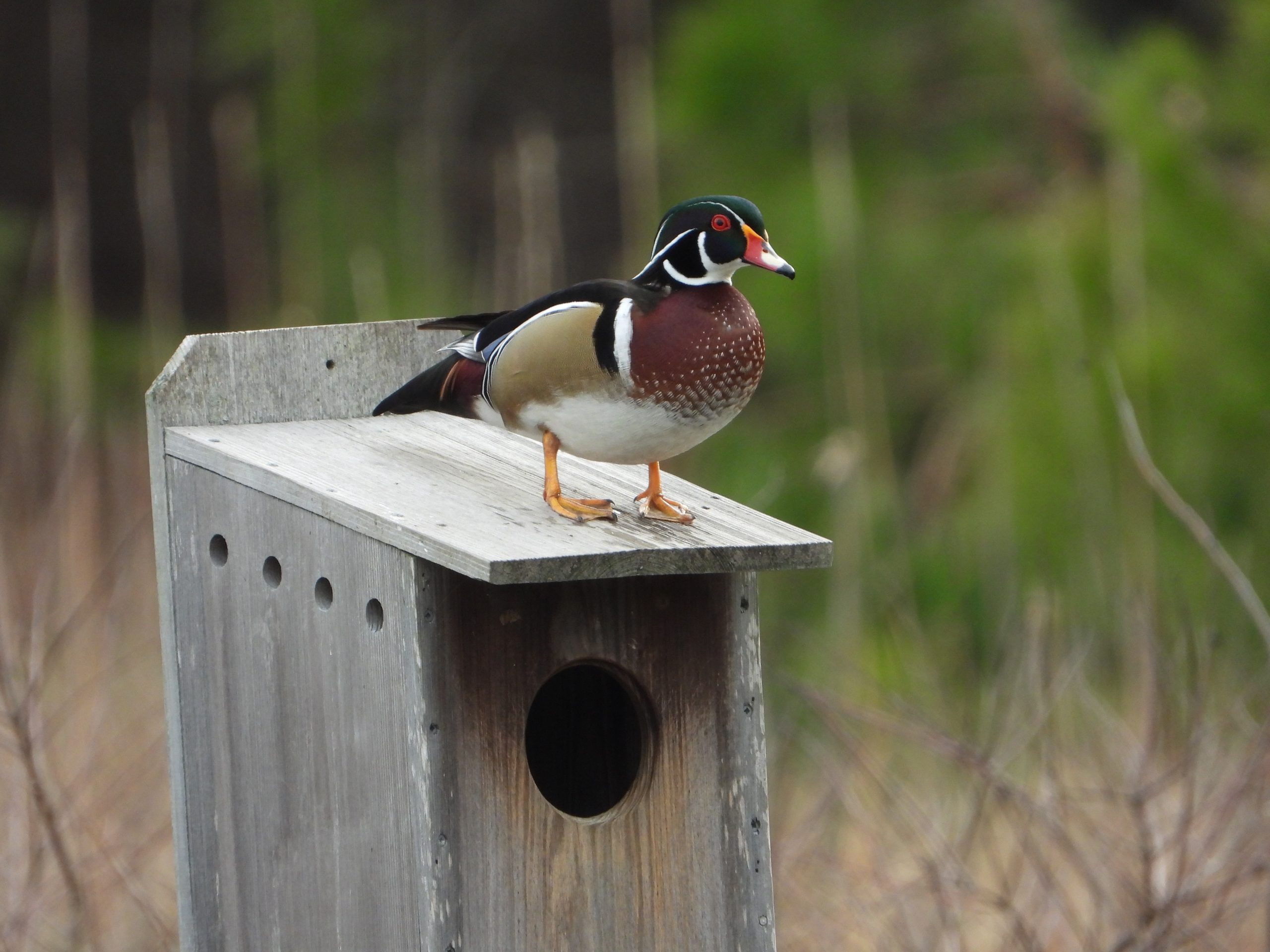
A wood duck drake in the wetland at Abend Hafen Tree Farm, protected by ESLC since 1992. Image: Rick Abend.
During storms, wetlands provide important buffer zones between the shore and open water, absorbing the brunt of strong wave action before it hits land. They keep our waterways clean for fishing, crabbing, swimming, and boating. And the shallow areas of wetlands are important nursery grounds for some of our favorite local fish and shellfish. “Wetlands are so important to our health and resilience,” explains ESLC’s enhanced stewardship manager Larisa Prezioso. “They are almost like land stewards themselves, providing coastal resiliency, stormwater runoff benefits, and filtering of nutrients and sediments. They work for us if we appreciate them.”
A land steward herself, Prezioso both monitors easements to ensure that properties meet conservation standards and she provides landowners with additional resources and assistance when they’d like to further enhance their properties by creating wildlife habitat, implementing passive recreation, or tackling challenges like erosion or invasive plant species. This enhanced stewardship is tailored to the unique qualities and goals of a specific property. For instance, while monitoring, an outdoorsman might mention to Prezioso that they’d like to create habitat to support wood duck, in which case she might point them towards the Maryland Nontidal Wetland Award Program. Alternatively, if she notices significant flooding on a piece of working farmland due to saltwater intrusion, Prezioso might direct the landowner to the University of Maryland Extension to explore the possibility of salt-tolerant alternative crops.
When it comes to wetland restoration, Prezioso and ESLC most often work with three distinct types: tidal marshes, nontidal marshes, and man-made impoundments. Here are three different ways ESLC engages with and advocates for these three different wetland environments across the Eastern Shore.
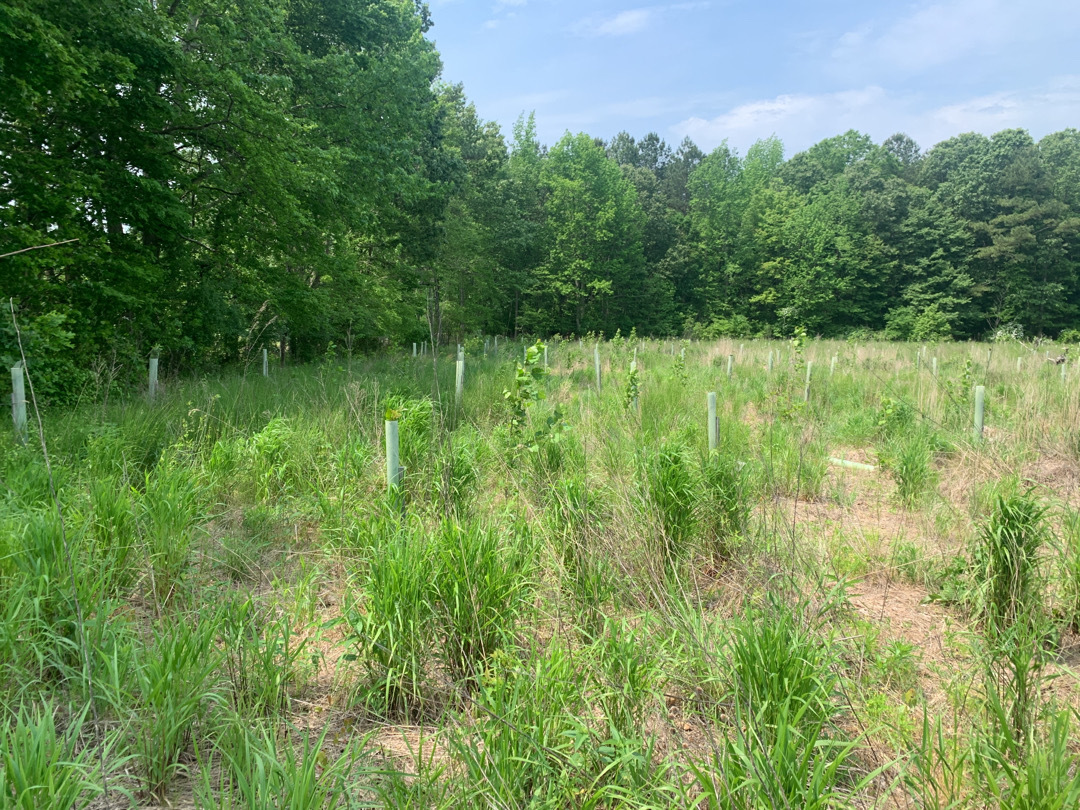
ESLC’s conservation easement on the McBee Farm in Talbot County covers the property’s restored non-tidal wetland areas. This wetland was made possible by funding through the CBT/MDE Maryland Nontidal Wetland Award Program, and constructed by Ecotone.
Non-tidal Wetland
An essential Eastern Shore habitat, non-tidal wetlands are wetland environments that are not directly affected by tides, rivers, or bays. Installing, enhancing, expanding, or protecting a non-tidal wetland can benefit a property in many ways, from redirecting stormwater and reducing irrigation needs to improving on-site hunting and providing habitat for migratory waterfowl. Often overlooked, these swamps, wet meadows, vernal pools, and forested wetlands make up the majority of wetland habitat in the U.S. and provide unique benefits all over the country, from cranberry and blueberry cultivation to erosion control, bird nesting sites, and removal of heavy metal pollutants.
Recently, Chesapeake Bay Trust and the Maryland Department of the Environment have made non-tidal wetland restoration funding available to more landowners by reducing requirements to a five-acre minimum. This grant, called the Maryland Non-tidal Wetland Award Program, focuses specifically on restoring and protecting forested non-tidal wetland habitat, and offers a complete package from design and construction to monitoring and perpetual protection through a funded conservation easement. Although large structures and mowed trails are not permitted, hunting, especially of deer, is allowed and encouraged. Interested landowners located within the Eastern Shore funding area are encouraged to reach out to Larisa Prezioso, ESLC’s enhanced stewardship manager, at (908) 246-3419 or at LPrezioso@eslc.org.
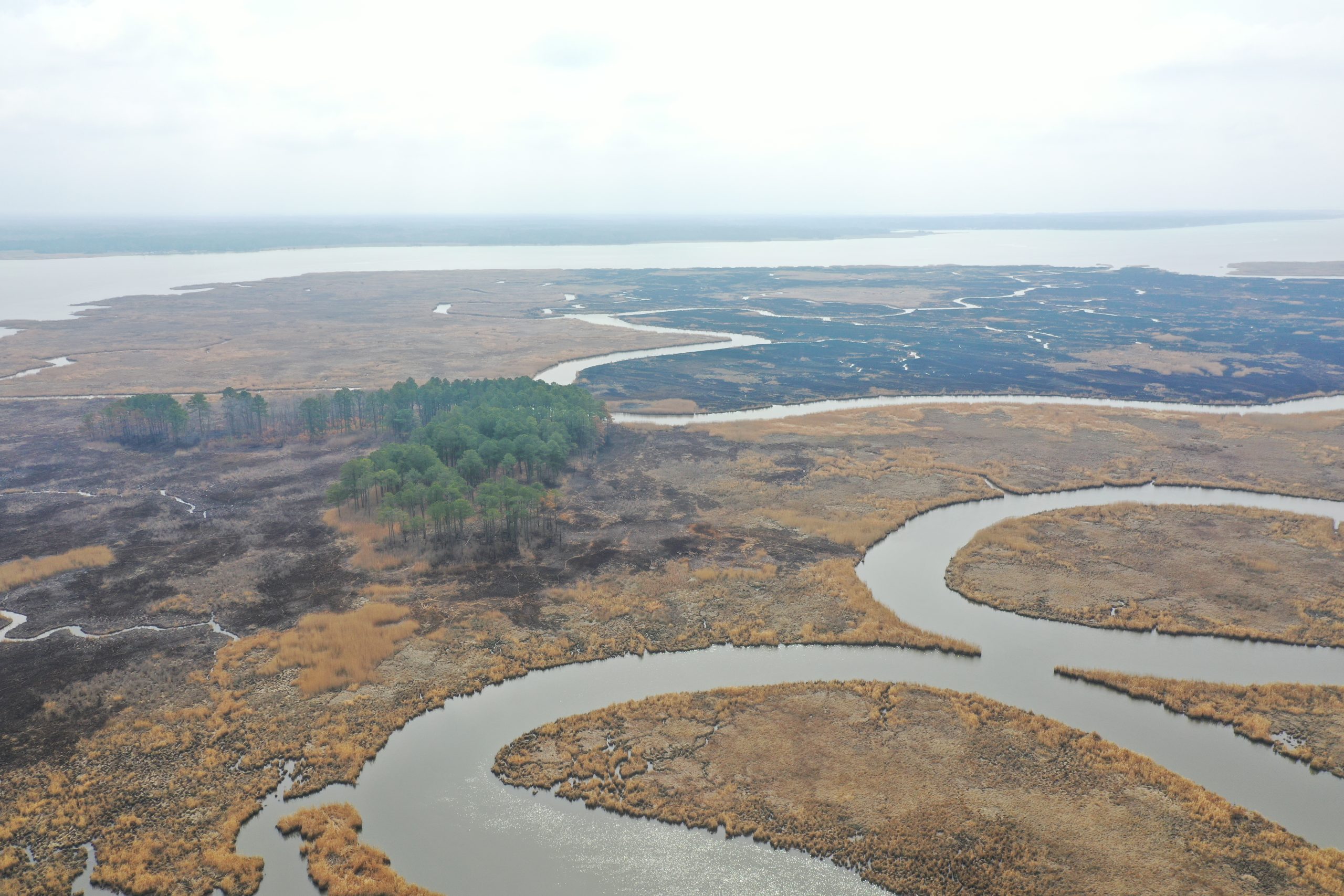
Since 1995, ESLC has protected more than 500 acres of tidal wetland at Horseman’s Perfection in Dorchester County.
Tidal Wetland
Today, ESLC protects over 2,700 acres of tidal wetland from Cecil to Dorchester County, ranging from less than a half acre on some properties to more than 500 acres at Horseman’s Perfection outside of Cambridge. Tidal wetlands are flat, vegetated areas subject to regular flooding by salt, brackish, or freshwater. They can be found along streams, rivers, and bays, and provide habitat to hundreds of species of plants, insects, and animals. One species critically dependent on tidal wetlands is the saltmarsh sparrow. According to the U.S. Fish and Wildlife Service, “More than four out of every five saltmarsh sparrows have disappeared since 1998 – an estimated population decline of 87%.” Endemic to the east coast, these tidal marsh songbirds are found nowhere else in the world, and 25% of them live in Maryland. This year, ESLC joined a coalition of partners led by Audubon Mid-Atlantic for an ambitious project called Marshes for Tomorrow (MfT). MfT’s goal is to identify, protect, and restore at least 25,000 acres of the saltmarsh sparrow’s most important tidal salt marsh habitat in Maryland. The project is funded through the National Fish and Wildlife Foundation’s National Coastal Resilience Fund and U.S. Fish and Wildlife Service. ESLC is specifically working within the community engagement sector for this initiative, with a focus on Dorchester County. Through a survey, in-person meetings, and outreach, ESLC is helping to identify potential salt marsh restoration properties within MfT’s priority areas (which are still being researched). The first round of community meetings is being scheduled for January 2024 with a second round to follow in the spring. Residents of Dorchester County are encouraged to take our survey and participate in our first community engagement meeting on Saturday, January 27th, at 1:30 pm at the Harriet Tubman Underground Railroad Visitor’s Center. For information about upcoming meetings and other project resources, please look out for future ESLC postings or contact marshes4tomorrow@gmail.com.
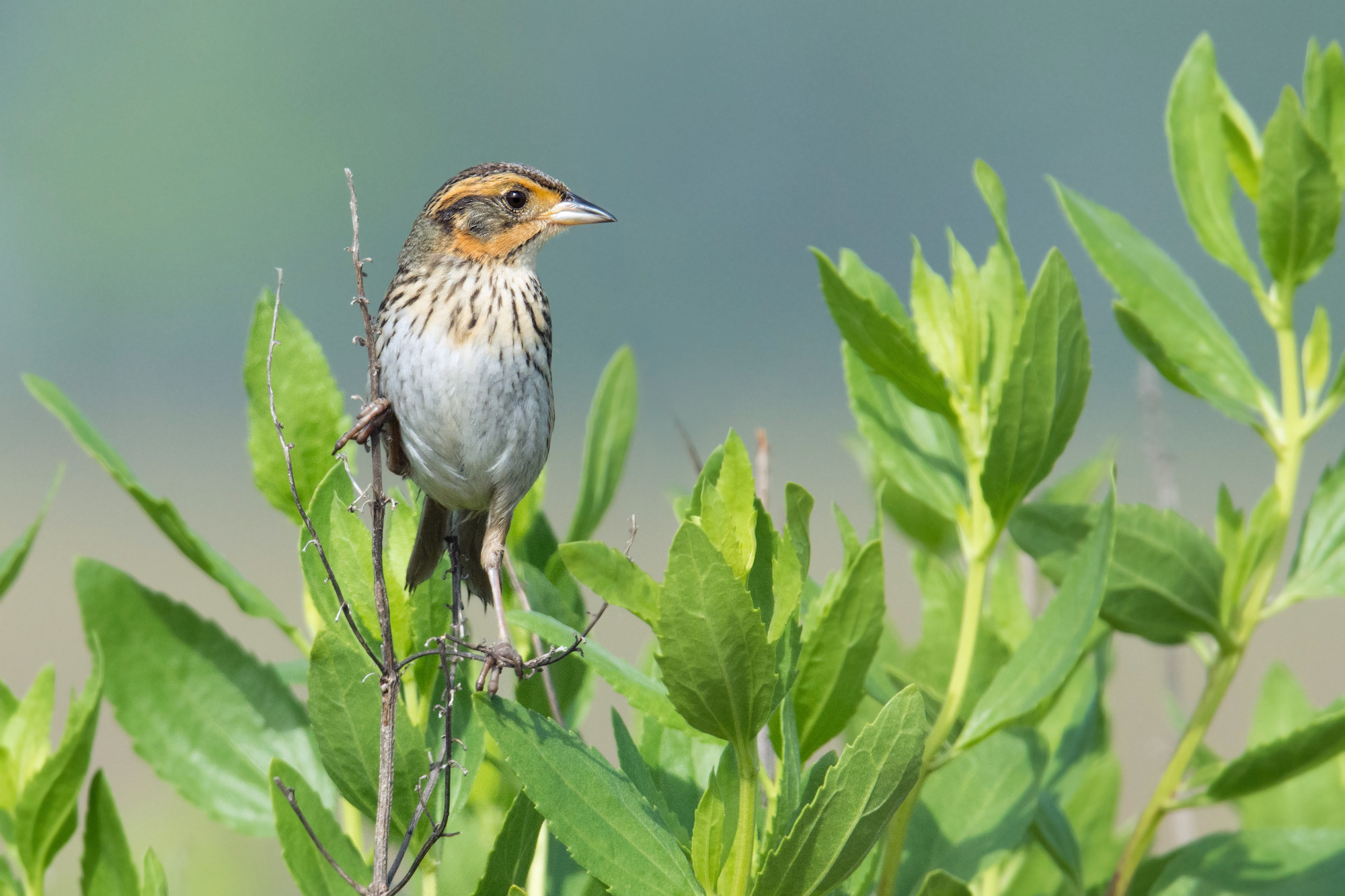
A saltmarsh sparrow (Image: Frank Lehman).
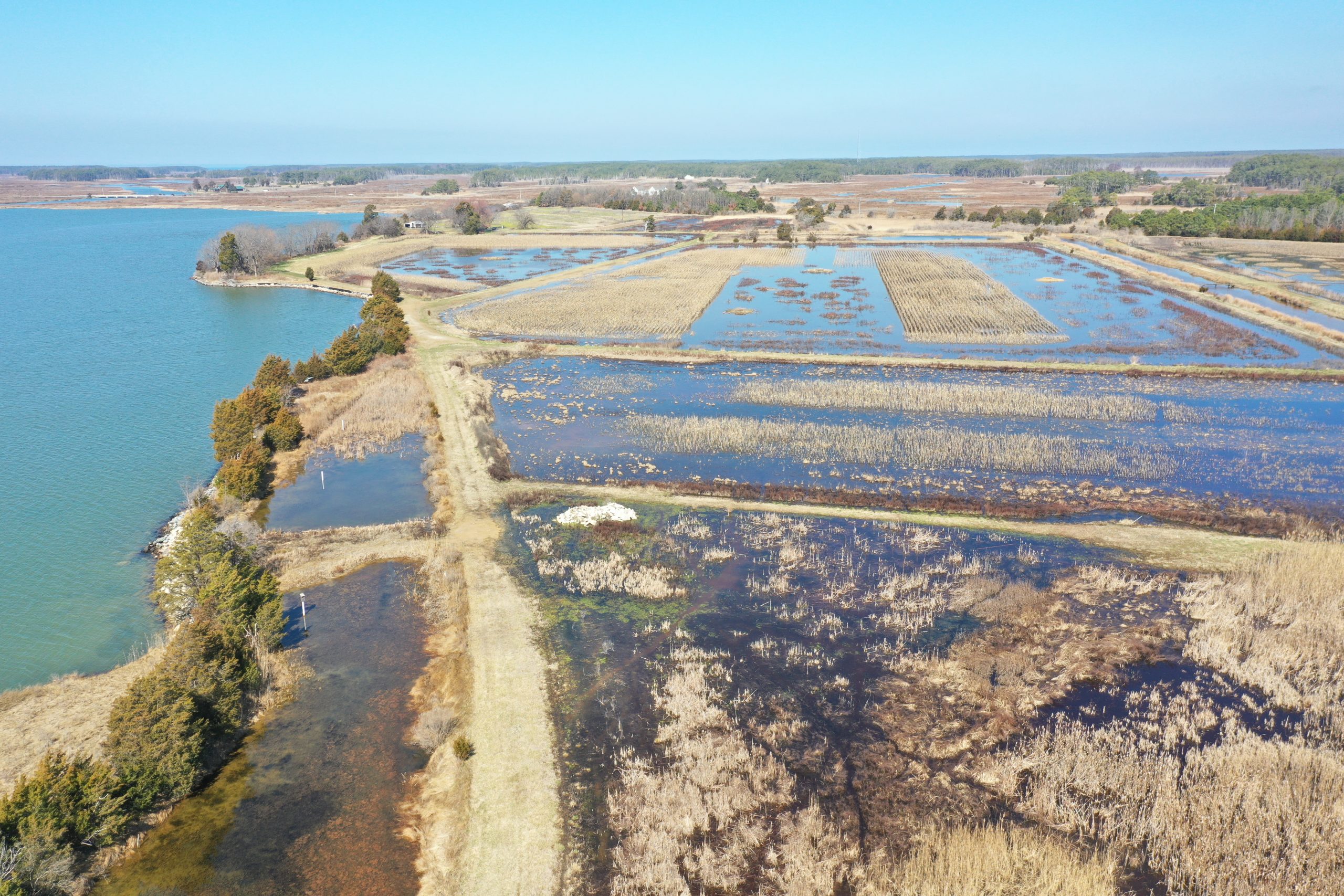
Mallard Haven’s ESLC conservation easement protects a scenic Eastern Shore landscape and endangered species habitat with over 200 acres of forest and tidal wetland located within the Chesapeake Bay Critical Area.
Impoundments
For landowners invested in hunting and birding, manmade impoundments can attract a variety of waterfowl. Usually, levees are built around an existing field allowing the landowner to plant, flood, and drain the area at certain times of year. This generates both attractive food and a resting spot for birds during waterfowl migration. When an easement owner is interested in creating this type of habitat, ESLC will often partner with Ducks Unlimited (whose neighboring office is also found at the Eastern Shore Conservation Center) to plan and implement the impoundment in a way that’s informed, sustainable, and effective. At a recent field day hosted by Point Pleasant Foundation, Chase Colmorgan and Ed Farley of Ducks Unlimited explained moist soil management, a “gold standard” impoundment technique that utilizes a “wide range of natural plants” instead of traditional crops, producing more energy per acre than a harvested agricultural field would. This type of impoundment results in higher calorie food like seeds from native plants and grasses and a variety of insects and invertebrates.
Ducks Unlimited has established many impoundments at the Mallard Haven hunting property in Dorchester County. Owned by conservationist Jerry Harris, a former ESLC board member and current Ducks Unlimited board member, Mallard Haven’s conservation easement protects a scenic Eastern Shore landscape and endangered species habitat with over 200 acres of forest and tidal wetland within the Chesapeake Bay Critical Area. “We don’t do agriculture in the traditional way,” Harris explained in a recent interview with the Talbot Spy, “We do what are called “moist soils plants” and have become a real advocate of that. That’s using natural food… things like smartweed and nutsedge, things that ducks eat in the wild.” Harris started an annual best practices landowner seminar each year with 70 to 80 landowners, many of whom have adopted Harris’s impoundment style on their own properties. “With habitat, this isn’t a zero-sum game,” Harris says. “If I have good habitat. You don’t have bad habitat… If we both have good habitat there will be more animals, birds, that come here and use it… If we can hold what we have, grow it, and make it more attractive, that would be my ultimate goal.
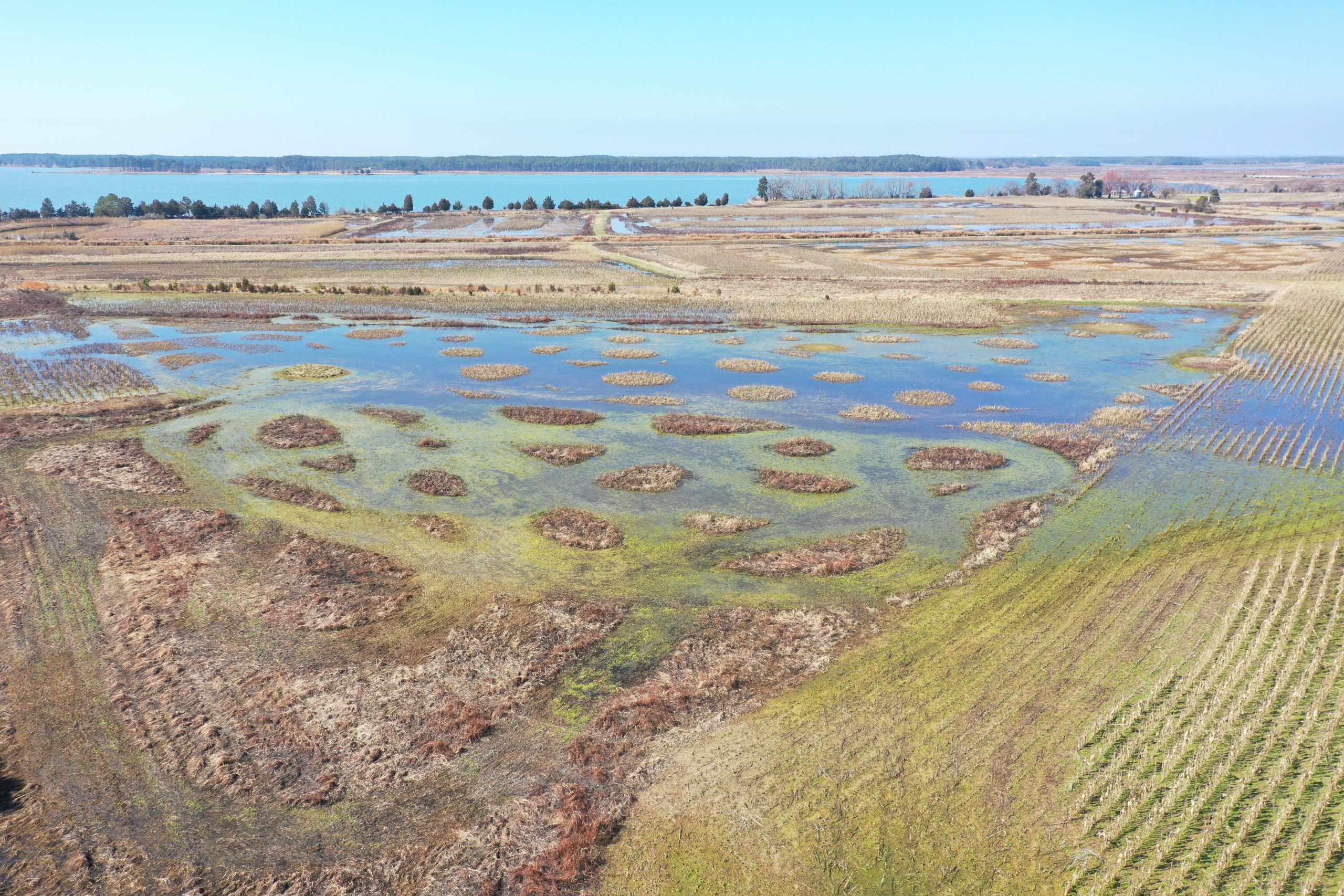
Mallard Haven’s ESLC conservation easement protects a scenic Eastern Shore landscape and endangered species habitat with over 200 acres of forest and tidal wetland located within the Chesapeake Bay Critical Area.






